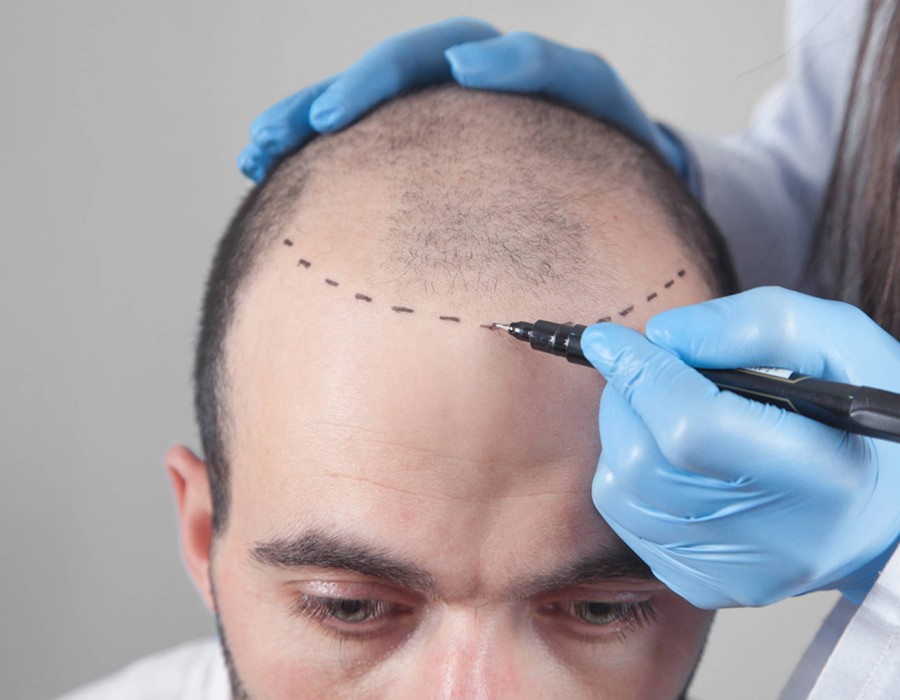A hair transplant is a popular cosmetic procedure that involves relocating hair follicles from a donor area, usually the back or sides of the head, to areas of the scalp with thinning or no hair. While this procedure has been the go-to solution for many dealing with hair loss, questions about its overall healthiness often arise. So, is a hair transplant healthy? This Article delves into the details of Hair Transplant in Dubai Treatment.
Understanding the Procedure
Hair transplants are minimally invasive procedures, performed under local anesthesia. Surgeons typically use two main techniques: Follicular Unit Transplantation (FUT) and Follicular Unit Extraction (FUE). In FUT, a strip of the scalp is removed and divided into individual hair follicles, while FUE involves extracting follicles directly from the donor area one by one. Both techniques aim to ensure that the transplanted hair looks natural while retaining healthy growth after healing.
Does Hair Transplant Affect Your Health?
Generally, a hair transplant is considered a safe procedure when performed by a qualified professional. It doesn’t interfere with the overall health of the scalp or hair follicles. The donor hair is not taken from genetically weak areas, meaning the hair continues to grow naturally. The risk of any severe complications is minimal, and common side effects are limited to temporary swelling or discomfort, which usually resolves within a few days.
Benefits
The primary benefit of a hair transplant is its ability to restore hair permanently. Unlike medications or topical treatments that may offer temporary relief, hair transplants provide a long-lasting solution to hair loss. For many individuals, this results in an increase in self-esteem and confidence. Additionally, since the transplanted hair comes from the individual’s own scalp, the risk of rejection is very low.
Maintaining the Health of Transplanted Hair
Post-procedure care is crucial for ensuring that the transplant remains healthy. Patients are generally advised to follow their surgeon’s aftercare instructions, such as avoiding direct sunlight, refraining from scratching the treated areas, and maintaining proper scalp hygiene. When properly followed, the hair transplant’s health can be maintained for many years, and the transplanted hair usually grows in full over a period of 9-12 months.
Are There Any Risks Involved?
Although rare, there are some risks associated with hair transplant surgeries, such as infection, scarring, or uneven hair growth. These complications, however, are preventable with the right surgical team and by adhering to post-surgery guidelines. Ensuring that the procedure is done by a certified surgeon significantly reduces any health risks associated with the surgery.
Is Hair Transplant Right for Everyone?
Hair transplants are suitable for men and women with thinning or balding hair. However, individuals with health issues such as chronic scalp infections or scalp conditions like psoriasis may need to reconsider the procedure. Additionally, age and expectations should be carefully assessed to determine if it’s the best choice for the individual’s hair restoration needs.
FAQs
Is hair transplant safe for everyone?
Hair transplants are generally safe for healthy individuals who have sufficient donor hair. However, people with certain health conditions or severe scalp issues may need to consult a professional before undergoing the procedure.
Do hair transplants look natural?
Yes, hair transplants look natural because the hair is taken from the individual’s own scalp, ensuring a seamless match with the existing hair.
How long does it take for hair to grow after a transplant?
Hair typically begins to grow in the transplanted areas 3 to 4 months after the procedure, with full growth noticeable around 9 to 12 months post-treatment.
Are hair transplants permanent?
Yes, hair transplants are a permanent solution to hair loss, and the transplanted hair will grow as normal.
Do I need to do anything after a hair transplant to maintain the results?
To ensure optimal results, it is important to follow the aftercare instructions, including keeping the scalp clean, avoiding physical trauma, and limiting sun exposure.
Conclusion
In conclusion, hair transplants are a healthy and effective way to restore lost hair for individuals with pattern baldness or thinning hair. When performed by qualified professionals, they offer lasting results with minimal health risks. Aftercare is key to maintaining the success of the transplant, and the procedure, overall, is considered safe and reliable for those seeking a permanent hair restoration solution.






Comments